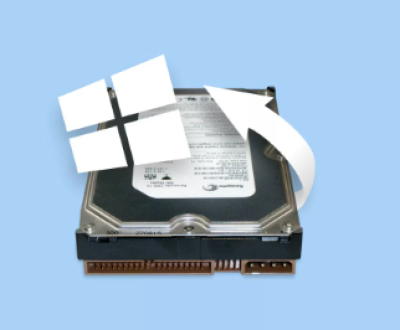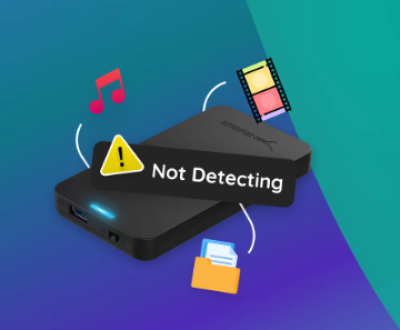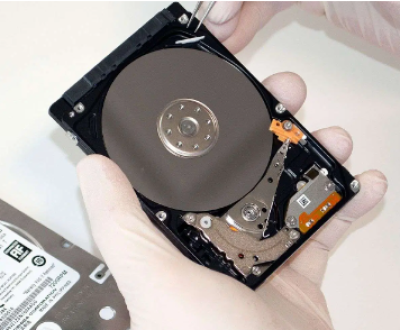Retrieving a deleted Excel file can be achieved through several methods, depending on various factors such as the deletion circumstances and the storage medium.
Recover from the Recycle Bin (for Windows) or Trash (for Mac)
For Windows Users:
Check the Recycle Bin: When you delete a file in Windows, it usually goes to the Recycle Bin. Locate the Recycle Bin icon on your desktop and double-click to open it.
Find the Excel File: Scroll through the files in the Recycle Bin and look for the deleted Excel file. You can use the file name, date modified, or other details to identify it.
Restore the File: Right-click on the Excel file and select “Restore”. The file will be returned to its original location.

For Mac Users:
Access the Trash: On a Mac, deleted files are moved to the Trash. Locate the Trash icon in the Dock and click on it to open.
Locate and Restore: Find the deleted Excel file in the Trash. You can click on the “Date Modified” or “Name” columns to sort the files for easier identification. Then, right-click on the file and choose “Put Back” to restore it to its original location.
Use File History or Time Machine
File History (for Windows):
Check if File History is Enabled: If you have File History enabled on your Windows PC, it can be a useful tool for recovering deleted Excel files. Go to the Control Panel and search for “File History”.
Restore the File: In the File History window, you can browse through different versions of your files. Locate the Excel file you want to recover and select the appropriate version. Then, click the “Restore” button to get the file back.
Time Machine (for Mac):
Verify Time Machine Backup: If you have been using Time Machine to back up your Mac, connect the external drive or network location where the backups are stored.
Use Time Machine Interface: Open the Time Machine application and use the timeline on the right side to navigate to the time when the Excel file was still intact. Locate the file in the Time Machine interface and click “Restore” to retrieve it.
Recover from Backup
Cloud Backup Services:
Check Cloud Storage: If you use cloud storage services like Google Drive, Dropbox, or OneDrive, check if the Excel file was synced to the cloud before it was deleted. Log in to the cloud service’s website or application and look for the file in your account.
Restore from Version History: Many cloud storage services have a version history feature. You can access this to find previous versions of the Excel file and restore the one you need.
External Hard Drive or Network Backup:
Search External Storage: If you regularly back up your data to an external hard drive or a network-attached storage (NAS) device, connect the drive or access the network location.
Locate and Copy the File: Search for the Excel file in the backup directory and copy it back to your computer.
Employ Data Recovery Software
Selecting the Right Software:
Research and Choose: There are many data recovery software options available, such as Recuva, EaseUS Data Recovery Wizard, and Disk Drill (for Mac). Research and choose a reliable software that is suitable for your operating system.
Check Compatibility: Make sure the software is compatible with your version of Windows or Mac and supports Excel file recovery.
Using the Recovery Software:
Panda Assistant offers a range of recovery tools to restore valuable data. It supports a variety of file formats, including documents, images, videos, and audio files. In addition to file recovery, the software provides advanced features like deep scanning and preview options, ensuring a higher success rate in data recovery. Panda Assistant is compatible with both Windows and Mac operating systems, making it a versatile choice for users looking for reliable, user-friendly data recovery solutions.
Install and Scan: Install the data recovery software on your computer and launch it. Select the drive or storage location where the Excel file was deleted from and start a scan.
Preview and Recover: The software will scan for deleted files and display the results. You can usually preview the Excel files to ensure they are the ones you want. Select the files and click the “Recover” button to save them to a new location.
Seek Professional Data Recovery Services
When to Consider Professionals:
Severe Data Loss: If the above methods don’t work and the Excel file contains critical data, it may be time to consider professional data recovery services. This is especially true if the deletion was caused by a hard drive failure, physical damage to the storage device, or a complex software issue.
Complex Situations: For example, if the drive has bad sectors, has been reformatted, or if there is a problem with the file system, professional help may be the best option.
Choosing a Professional Service:
Research and Reviews: Look for reputable data recovery companies with good reviews and a proven track record. Check their certifications and experience in dealing with Excel file recovery.
Get a Quote: Contact the data recovery service and provide details about the data loss situation. They will usually offer a free consultation and give you a quote for the recovery service.
Special Considerations for Excel Files on Shared Drives or Servers
Check with System Administrator:
Report the Deletion: If the Excel file was stored on a shared drive or a server, contact the system administrator immediately. They may have access to server logs or backup systems that can help recover the file.
Provide Details: Give the administrator as much information as possible about the file, such as the file name, location, and when it was last accessed.
Server-Side Backup and Recovery:
Restore from Server Backup: The system administrator can check if the server has regular backups and restore the Excel file from the appropriate backup point. Some servers have built-in recovery mechanisms or use specialized backup software.
Version Control Systems: If the shared drive or server uses a version control system, it may be possible to retrieve previous versions of the Excel file. The administrator can access the version control logs and restore the file to a previous state.
Precautions to Prevent Future Data Loss
Regular Backups:
Set Up Automated Backups: Use tools like File History on Windows or Time Machine on Mac to set up regular automated backups. You can also use cloud backup services to ensure your data is stored off-site.
Backup Frequency: Decide how often you need to back up your data. For important Excel files, it may be advisable to back up daily or even more frequently if there is a lot of activity.
Enable Version Control:
Use Excel’s Built-in Features: Excel has features like “AutoSave” and “Version History” that can help you recover previous versions of a file. Make sure to enable these features in the Excel settings.
Third-Party Version Control Tools: Consider using third-party version control tools like Git or SVN if you are working on important Excel projects with multiple people or need to track changes over time.
Handle Files with Care:
Double-Check Before Deleting: Always be careful when deleting files. Double-check that you really want to delete the Excel file before confirming the deletion.
Avoid Unnecessary Changes: When working on an Excel file, make sure to save your work regularly and avoid making unnecessary changes that could lead to data loss.
About us and this blog
Panda Assistant is built on the latest data recovery algorithms, ensuring that no file is too damaged, too lost, or too corrupted to be recovered.
Request a free quote
We believe that data recovery shouldn’t be a daunting task. That’s why we’ve designed Panda Assistant to be as easy to use as it is powerful. With a few clicks, you can initiate a scan, preview recoverable files, and restore your data all within a matter of minutes.
Subscribe to our newsletter!
More from our blog
See all postsRecent Posts
- How to recover data from portable hard drive 2025-07-10
- How to recover data from a broken hard drive 2025-07-10
- How do i recover files from a formatted hard drive 2025-07-10

 Try lt Free
Try lt Free Recovery success rate of up to
Recovery success rate of up to









